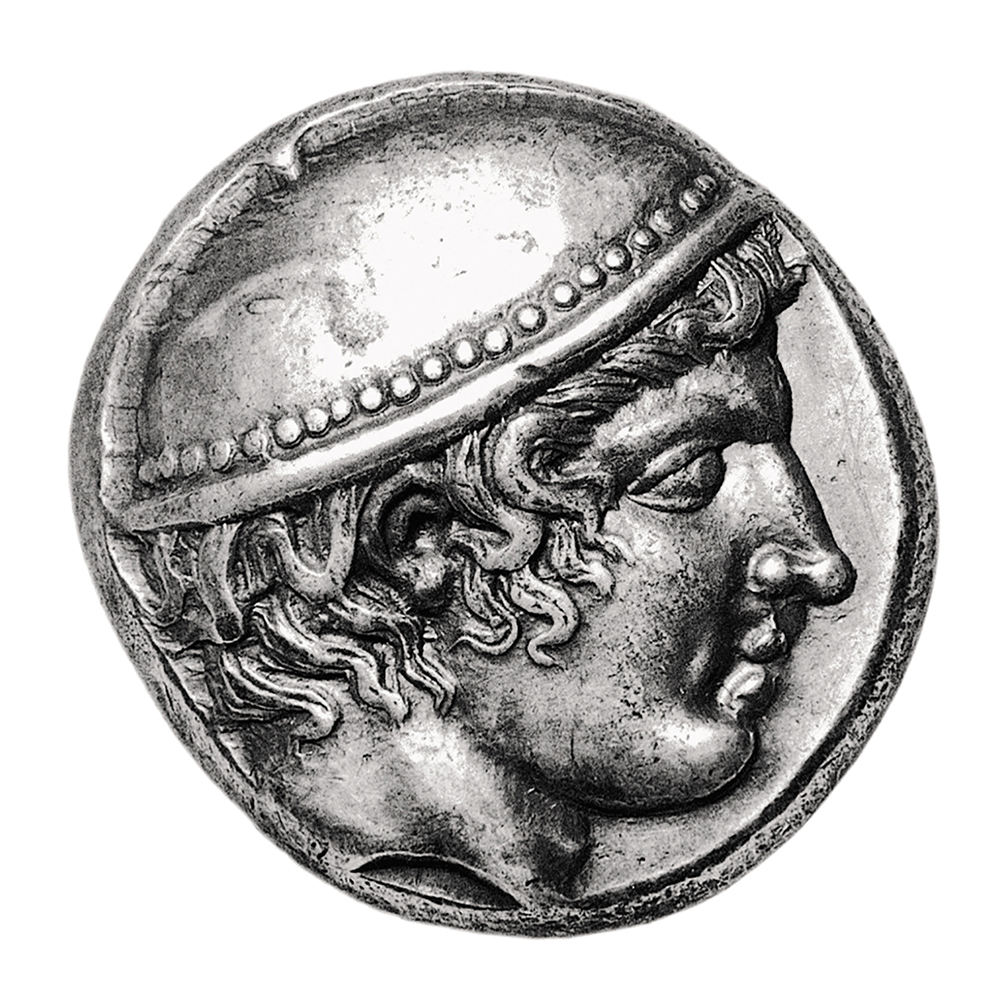
Hermes
Hermes, messenger or interpreter of the will of the gods, is the god of shepherds, protector of flocks, and travellers. In his honour, statues were erected beside roads (‘herms’). Later, he also became the god of commerce and even thieves. It is said that he was the inventor of the scales. He protects houses and roads and is probably of pre-Hellenic origin.
He is depicted as young and beautiful, normally naked or dressed in a short tunic. On his head he has a helmet with wings, wears winged sandals and holds his main symbol in his hand: the caduceus.
Hermes is depicted in the Gulbenkian Collection on the coins minted in Thrace, which still reveal archaic characteristics (a frontal eye in a profile facial perspective), showing the head of the god in profile on the obverse and incused on the reverse, the first with a caduceus, the second with a billy-goat, and the third in a freer style that is notable not only on the obverse but also on the reverse, also incused, but with a more vigorous billy-goat. The coin mentioned above, with the head of Demeter on the obverse and Hermes on the reverse carrying the abandoned Dionysus, is from the Peloponnese (see Demeter). Minted in Lampsakos is a coin with the head of Hermes with short hair and petasos on the obverse and forepart of Pegasus on the reverse.